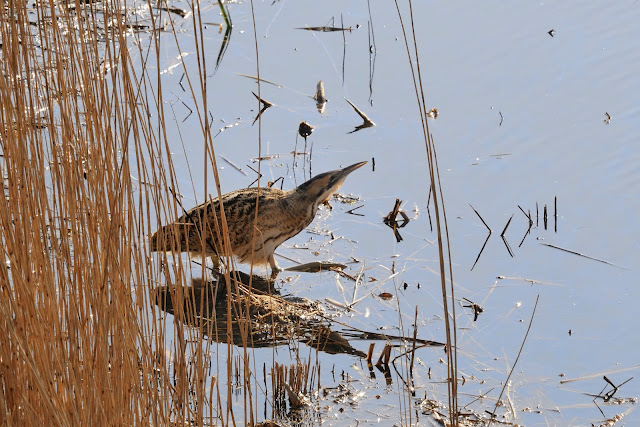One of the birds that is on the hit list of possible the majority of people interested in the natural world, is the Bittern. On 4th March 2014 we visited RSPB Minsmere, one of our favourite sites because of its diversity (the Scrape to the sea front). One particular hide, which is on the edge of the reed beds, is known as the bittern hide, and for good reason. We had not been there very long when our bird appeared really close to the hide and we were able to get a few images - magic! A description by the RSPB: `The bittern is a thickset heron with all-over bright, pale, buffy-brown plumage covered with dark streaks and bars. It flies on broad, rounded, bowed wings. A secretive bird, very difficult to see, as it moves silently through reeds at water's edge, looking for fish. The males make a remarkable far-carrying, booming sound in spring. It's very small, reedbed-dependent population make it an Amber List species. It is also a Schedule 1 species.` Read more ...





